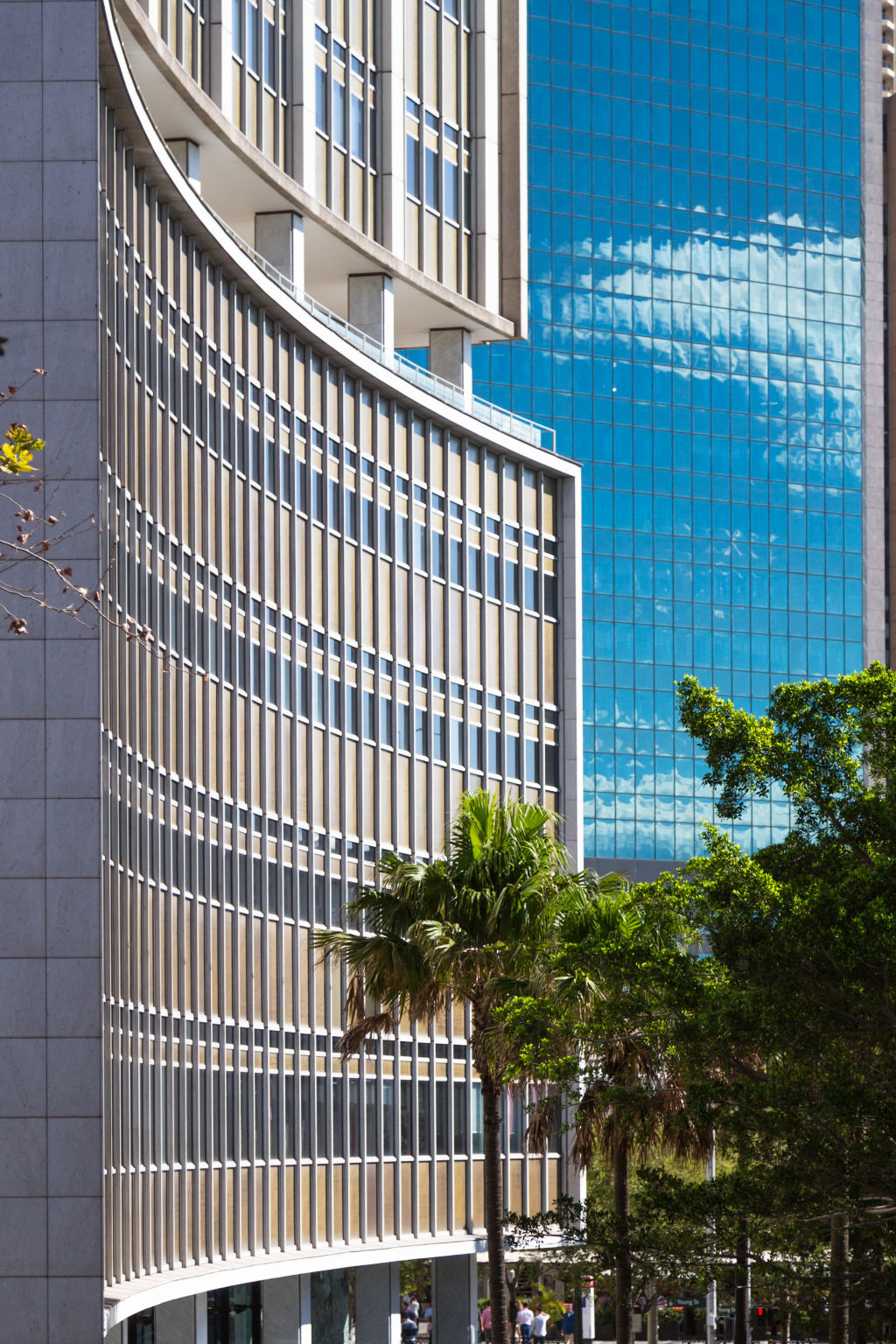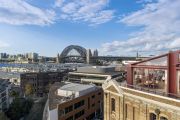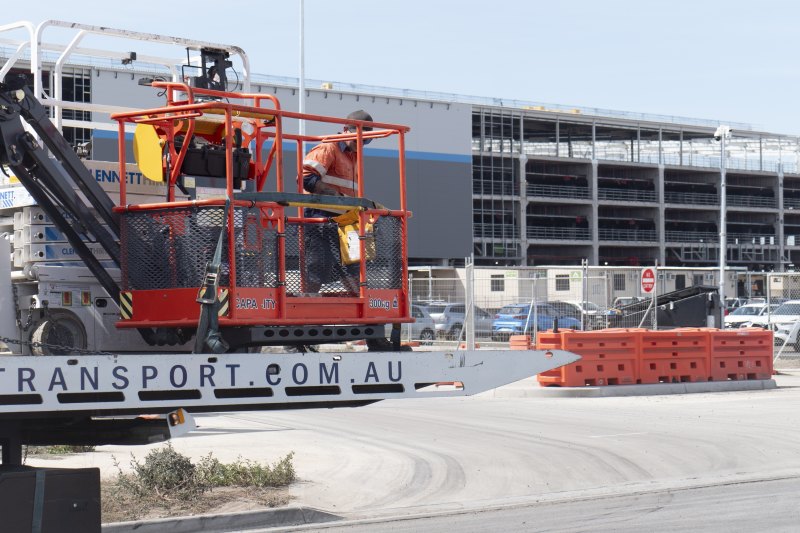
AFR Property Summit: Commercial real estate reaches positive turning point
Icy winds have been blowing through the commercial real estate landscape over the past couple of years, but balmier days are at last in sight.
The “Big Chill” is now finally giving way to the equally “Big Thaw”, says Tim Church, chair of investment banking at global financial services firm Morgan Stanley Australia.
“We’ve clearly moved, in a relatively short period of time, from a negative outlook to positive,” he told the AFR Property Summit on commercial property on Tuesday.
“Activity is increasing, as we’ve seen from the $24 billion deal for AirTrunk, the sectoral trends all look favourable, we’re pretty much at the bottom end of valuations, and there’s an abundance of capital sitting on the sidelines. So, you don’t need to wait for the central banks to start cutting rates to act; you need to get ahead of the curve.”
Church’s buoyant take on the sector is pumped up by slowing inflation, central banks elsewhere cutting rates, and a rising tide of global mergers and acquisitions. In addition, artificial intelligence is fuelling the next wave of data centre growth, as demonstrated by the amazing AirTrunk purchase by Blackstone Australia and CPP Investments, the biggest price ever paid for a data centre business in the world and the fifth biggest deal in Australia’s history.
And then there’s the softening Australian dollar, which makes doing business here more attractive, and the sight of $US4 trillion of global capital, or “dry powder”, waiting on the sidelines to find a new home.
“Don’t wait for the bottom of the market,” Church advised. “Start deploying now! Don’t wait for the banks to cut rates, get ahead of the curve. The trend is your friend as they say in markets.”
It was an optimistic view of the commercial market, with that stellar deal boosting the mood of the professionals gathering for the annual think tank. Robin Khuda, the founder and chief executive of AirTrunk, even made an appearance to say how it felt to be the toast of the room as the “$24-billion-dollar man”.
He was at pains to insist that the big celebration, however, would wait until all the i’s have been dotted and t’s crossed by the Australian Foreign Investment Review Board regulators.
It’s very much a sign of the times, he believes. “This is a reflection of the way the world is moving,” said Khuda, who also does business in Singapore, Japan and Hong Kong. “If you look back at 2010, the biggest companies were Walmart, Exxon Valdez and Chrysler. Now, it’s Apple, Microsoft and Nvidia.
“We were valued at $3 billion by Macquarie and PSP four years ago. When I said our target was to get $10 billion, people laughed at us. But now we’ve got a good number and we’ve still only scraped the surface. There’s significant investment going in and this is the engine room of all the innovation and technology. It’s an exciting time. The bottom line is that this is infrastructure.”
This fresh wave sweeping through the world of commercial real estate is shaking up everything in its wake. The traditional market staples – office, retail and industrial – are now often being passed over for the sexier young kids on the block.
Ruban Kaneshamoorthy, co-head of Australia real estate at Brookfield Asset Management, confirms the trends. “When I started six years ago, 95 per cent was office,” he said.
“Then in 2019, we went into student accommodation, in the middle of COVID and then pushed into logistics – and we’re now looking at hotel, cold storage and manufactured housing. We like those assets where you have to roll up your sleeves and do the work.”
Of course, student accommodation, already reeling from COVID, is now facing fresh challenges, with the federal government putting new caps on the number of international students.
Business leaders have roundly condemned the move. At Cushman & Wakefield, Noral Wild, chief executive – Australia and New Zealand, slammed it as making no sense.
“I think it’s a situation of politics impacting a sector that just came through one of the most challenging times we could ever have imagined,” she said. “It’s our fourth largest export and brings in about $30 billion a year from international students. It makes no sense and it’s pretty short-sighted – and it’s messing with the export market, which is pretty dangerous.”
Chris Tynan, head of Real Estate at Blackstone Australia, agreed. “It’s a hugely beneficial sector and it’s one of the best and largest sectors that doesn’t involve digging something out of the ground,” he said. “I don’t understand why we are doing it.
“It’s short sighted and it follows similar rhetoric we’re hearing in the UK and US.”
Pubs are another asset type that’s currently very much in favour, says David Harrison, chief executive of Charter Hall. “Everyone grows up thinking they want to represent Australia at the Olympics or own a pub,” he said.
“My old man ran a few pubs, so I got in early and learnt how to run pubs. The majority of pubs in this country are owner-operated, then you have big operators like the Endeavour Group and ABC and a whole bunch of other operators. There’s a lot of interest in this sector.”
However, there seems to be less interest today in build-to-rent, which seems to have fallen out of favour recently with a number of developers. Oxford Economics Australia reports that construction of these projects has plummeted by 19 per cent this year. That’s been the result, largely, of high interest rates, bulging building costs and uncertainty about the tax regime.
But Scott Mosely, chief executive of funds management at Mirvac Group, says it will bounce back. “The attractiveness of this sector is its continuity,” he said. “It has resilient cash flows that are created once you’ve created the project. As a result, capital will continue to be attracted to the sector.
“We’ve had a perfect storm in construction – rising costs during COVID, record wet weather and a record number of insolvencies – and we’ve sat out of the market for a little while, but the next couple of years will see us do more projects.”
Build-to-sell is also in dire straits, with the housing crisis uppermost on all property companies’ minds. Paul Scully, NSW Minister for Planning and Public Spaces, also addressed the summit, talking about how densification is the only way to ease the crisis, which is at its worst in the nation’s highest-priced housing market.
“Sydney is one of the least dense cities in the world – it ranks at 859,” he revealed. “Housing density is better for the environment and for reducing emissions than the rapid uptake of electric vehicles or a reduction in air travel alone. Housing types in NSW are also less diverse than they were a century ago. This means that people have less housing choice but also fewer options to stay in the suburbs they know and love as they move through different stages of life.”
He said his government was determined to improve the situation. “We’re committed to speeding up approvals, making it easier for projects to move through the housing pipeline and reach completion,” he said. “We’re also considering how we might provide short-term financial support to the under-pressure construction sector so that they can deliver new homes.
“This means not only confronting the housing crisis and construction sector challenges, but also making sure we have working age people who will bring new skills and innovation to the NSW business sector.”










